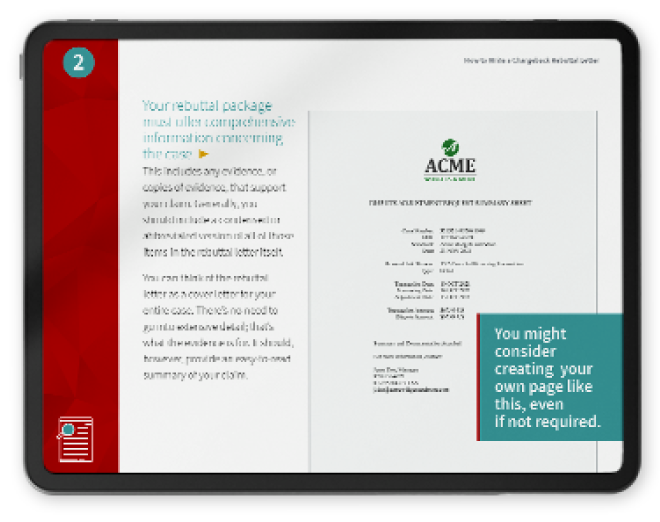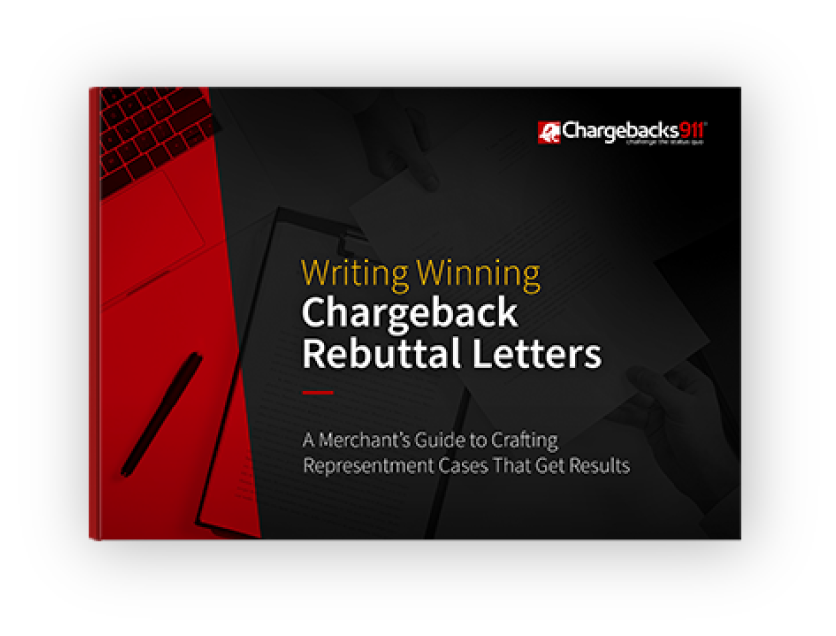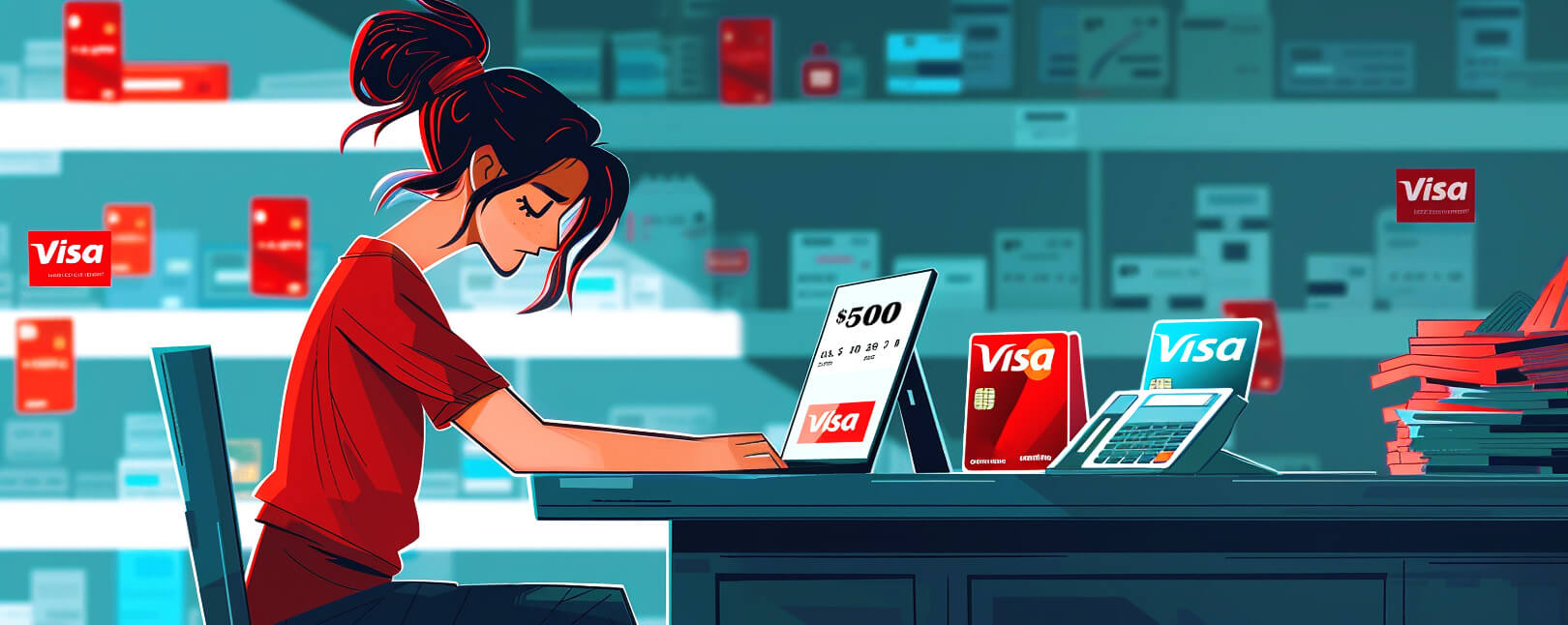Is Your Business Ready for Visa Compelling Evidence 3.0?
Representing fraudulent disputes is a critical part of any chargebacks prevention strategy. The process can be intimidating, though, especially for beginners. Proper timing, accurate rebuttal letters, and a knowledge of reason codes are all factors when attempting a reversal.
One of the most confusing elements of representment, though, is compelling evidence. This refers to any documentation that shows a claim was unwarranted, and the initial transaction should stand. Visa has rules as to what constitutes compelling evidence, but those rules are necessarily imprecise, so as to cover multiple different circumstances. For the merchant, that can make the whole process feel somewhat subjective at times.
Visa’s Compelling Evidence 3.0 (or “CE3.0”) initiative was designed to help remedy that problem, as well as streamline representments for all stakeholders. As a merchant, you’ll have an expanded, more specific set of potential evidence that can be presented through simplified protocols. Now, users of Order Insight will be able to classify qualifying chargebacks as fraudulent and block them before they are even filed.
Let’s take a closer look at CE3.0, and find out how it can save time, money, and revenue for merchants like you.
Recommended reading
- Visa Debit Chargebacks: Here’s Everything You Need to Know
- Visa Acquirer Monitoring Program: Major Updates to VAMP
- Visa Chargeback Time Limits: The 2024 Guide
- Visa Authorization Rules: Changes to Time Frames & Options
- Visa Chargeback Fees: 8 Tips to Help You Cut Dispute Costs
- Visa Resolve Online: The Guide to Manage Disputes With VROL
What is Visa Compelling Evidence 3.0?
- Compelling Evidence 3.0
Visa Compelling Evidence 3.0 is a set of guidelines and evidence requirements for disputes. It provides a standardized framework for all parties involved in the chargeback process, enabling merchants to substantiate claims by sharing real-time information, and prevent disputes marked with Visa reason code 10.4.
[noun]/kəm • pel • iNG • ev • ə • d • ns/Cardholders have the right to dispute unauthorized charges on their credit card statements. There are times, however, when a disputed transaction is actually valid: the customer may have called the bank in error, or they may be trying to game the system to engage in cyber-shoplifting. In either case, chargebacks filed without legitimate cause are considered first-person misuse, or “friendly fraud.”
Visa’s core rules (effective as of April 2023) have now introduced Visa Compelling Evidence 3.0 in response to this problem. This new ruleset expands the list of compelling evidence you can use to help undo an invalid customer dispute. In many instances, updated guidelines and parameters will be able to automatically identify a dispute as invalid and block it.
The new rules center on historical purchase evidence. If a merchant can provide evidence that certain elements (device fingerprint, IP address, etc.) used in the transaction being disputed were also associated with two previously undisputed transactions, the fraud claim will be denied.
CE3.0 was implemented to make the representment process more efficient, transparent, and fair. It specifically applies to disputes filed under Visa reason code 10.4: Other Fraud — Card-Absent Environment. This reason code is often associated with friendly fraud due to its generic, open-ended nature.
Compelling Evidence 3.0 only affects claims filed under Visa reason code 10.4 (Other Fraud — Card-absent Environment). Click here to learn more about Visa reason code 10.4.
Why is Visa Compelling Evidence 3.0 Necessary?
As we mentioned, fighting any dispute hinges on compelling evidence. But what makes any given piece of evidence “compelling?”
According to Visa guidelines, compelling evidence is defined as “proof the cardholder participated in the transaction, received the goods or services, or benefited from the transaction.” The documents that constitute compelling evidence are predetermined based on the type of chargeback in question.
Under legacy regulations, Visa merchants could only challenge a reason code 10.4 chargeback using a single previous transaction as evidence. All of the following data was required to match the dispute in question:
- IP Address
- Email Address
- Physical Address
- Telephone Number
Note that this information was only a prerequisite to challenge the chargeback. It still didn’t guarantee a reversal. In fact, if this was the only proof you had, the odds of winning the case would be low. Visa Compelling Evidence 3.0 was developed as a way of helping merchants mitigate losses to invalid disputes.
What are the Visa Compelling Evidence 3.0 Qualification Criteria?
The new CE3.0 rule set allows you to produce two previous transactions in response to a dispute. Neither of these transactions may have been previously reported as fraud. Both transactions must have been made more than 120 days — but also fewer than 365 days — before the dispute in question.
At least two data points (IP address, email address, physical address, telephone number) from the previous transactions must match the current transaction being disputed. You may also use device fingerprint or account login ID to validate a transaction, although at least one of the submitted data elements must be the IP address or the device ID.
Just reading about it can make it seem a little confusing. So, here’s a side-by-side look at the old and new rules:
| Current Requirements | CE 3.0 Requirements | |
| Number of prior purchases (undisputed) | 1 | 2 or more |
| Items required to match between prior undisputed purchases and transaction in question | All of the following: IP address, Email address, Physical (shipping) address, Telephone number | At least two of the following: Customer account/login ID, Delivery address, Device ID/device fingerprint, IP address |
| Time frame for undisputed transactions used as evidence | None | Processing date must be more than 120 days, but fewer than 365 days, before the transaction in question |
| Submission | In dispute response | Either pre-dispute or in dispute response |
There are also a few situational exceptions. For example, if you deal primarily with subscription customers, you may not have a matching IP address or device ID on recurring transactions. Instead, you may use an initial subscription billing transaction evidence, assuming it has not been previously disputed.
Remember: you may only submit prior transactions that are at least 120 days old, but which are also fewer than 365 days old. This essentially renders CE3.0 protocols useless when dealing with new customers.

How Visa CE 3.0 & Order Insight Work Together to Resolve Disputes
Working through Order Insight, you can actually block false dispute claims before they’re even filed and avoid a chargeback. That should be reason enough to get on board. But, even if you’re not using OI, Compelling Evidence 3.0 does still make it easier to represent false fraud claims after the fact.
To fully illustrate how Order Insight use CE3.0 to help you deflect chargebacks, let’s compare the pre- and post-dispute processes:
| Submitted Pre-Dispute | Submitted in Dispute Response |
| Prevents dispute | Dispute response (representment) still required |
| Claim cannot escalate to dispute | Dispute cannot escalate to arbitration |
| No monetary loss, no fees | Chargeback fees still apply |
| No impact to fraud ratios | No impact to fraud ratio |
| No impact to chargeback ratio | Chargeback ratio is impacted |
| Must be enrolled in Order Insight | Order Insight not required |
Pre-Dispute
The pre-chargeback application of CE3.0, as facilitated through Order Insight, goes something like this:
Let’s say a customer disputes a transaction, and the bank attempts to initiate a chargeback using a 10.4 reason code. Visa pre-selects up to five previous purchases from the same account, on which no active fraud reports or fraud disputes took place. Qualified historical transactions will be identified systematically by Visa and submitted to participating merchants as Order Insight inquiries. You would then need to return the data elements outlined in the qualification criteria for two or more of those pre-selected transactions.
Next, Order Insight will validate the data and then pass it along to Visa to assign liability. If criteria are met, the pre-dispute will be blocked, and liability for the transaction will remain with the issuer.
Post-Dispute
Aligning with the existing process, representment cases will require you to identify and collect details for two prior transactions for the same cardholder. Again, these claims must have happened between 120 and 365 days before the attempted dispute date.
Your acquirer will then deliver the response package via Visa Resolve Online (VROL), where the CE3.0 data elements will be validated. If the data elements from the historical transactions meet the qualification criteria, the response will be deemed successful.
In other words, if a chargeback does get filed, you’ll still benefit from CE3.0 rules, significantly increasing your chances of a reversal. If the chargeback has already been filed, though, you’ll still have to pay the chargeback fee. The dispute will also be reflected in your Visa chargeback rate.
For these reasons, dispute prevention using Order Insight is generally a more effective way to go. Click below to learn more about how to take advantage of this platform and prevent chargebacks today:
Learn more about Order InsightAdvantages of Visa CE 3.0
CE3.0 helps to promote transparency and accountability by requiring that all parties adhere to these guidelines. Issuers and acquirers are held to the same standards when evaluating a chargeback dispute, ensuring a more level playing field for all parties.
Visa Compelling Evidence 3.0 benefits for merchants with qualifying transactions include:
Fewer Overall Chargebacks
A lack of insight into transaction details is what allows friendly fraud to happen. The opportunity to present evidence earlier can decrease the number of friendly fraud chargebacks you receive.
Lower Chargeback Rate
Preventing 10.4 chargebacks will help lower your chargeback rate, as well as your fraud rate. Your dispute ratio won’t be artificially elevated from invalid claims.
Protected Revenue
Fraudulent disputes are typically deflected without the need for a merchant refund. You can also avoid loss of merchandise and chargeback fees.
Faster Resolutions
CE3.0 allows the submission of evidence during the dispute stage. In this way, false claims are deflected in real time.
Simplified Representments
To be fair, representment is never easy. But, with Visa CE3.0 rules in place, you have a wider array of tools for contesting fraud and recovering revenue.
Compelling Evidence 3.0 can help merchants and financial institutions better handle and resolve disputes. However, it's essential to recognize that CE3.0 can’t be a “one-size-fits-all” solution.
Are There Any Disadvantages to Visa CE3.0?
Visa Compelling Evidence 3.0 is a significant step forward in the fight against fraud and chargebacks. There are no real downsides to the use of CE3.0. That said, it shouldn’t be thought of as a panacea for chargebacks, as it won’t help you resolve every dispute.
If you’re dealing with a new customer, for example, CE3.0 won’t really come into play because the historical data won’t yet exist. Also, while not exactly a downside, some types of merchants will benefit from the new regulations more than others.
To provide another example, CE3.0 could be a huge help for merchants using a subscription business model. If you’ve been billing the same card the same amount every single month, finding matching transactions should be a snap. It may be less useful for merchants that tend to have“one-off” purchases, though.
Ultimately, CE3.0 serves as a solid foundation for improving the chargeback process. But, at the end of the day, it's only one piece of a broader solution to effectively manage chargebacks.
What Should I Do Now?
If you’re looking to get the most out of Compelling Evidence 3.0, here are a few tips to get you started:

The value of chargeback help from Cb911 isn’t limited to CE3.0 implementation. Our experts can help you discover the true sources of all your chargebacks, and help you implement a comprehensive chargeback management strategy to retain revenue and prevent future disputes.
Ready to get started? Or, just want to learn how much you stand to save? Contact us today to learn more.
FAQs
What are compelling evidence 3.0 dispute rules?
Visa Compelling Evidence 3.0 is a set of guidelines and evidence requirements that merchants and acquirers can use to strengthen their cases when responding to chargebacks. CE3.0 provides a standardized framework for all parties involved in the chargeback process to share information and substantiate their claims.
What is considered compelling evidence?
According to Visa’s guidelines, compelling evidence is “proof the cardholder participated in the transaction, received the goods or services, or benefitted from the transaction.” Under CE3.0, this has been updated to include previous undisputed purchases from the same cardholder.
What are the data elements for CE3.0?
Acceptable data elements for CE3.0 include the customer’s user ID, IP address, shipping address, or device ID. One of the two required data items must include either the IP address or the device ID/fingerprint.
What is compelling evidence for fighting chargebacks?
Certain evidence and information will always be necessary, such as customer name, email and billing addresses, service descriptions and receipts. Other specifics may vary based on the reason code. Compelling Evidence 3.0 only affects claims filed under Visa reason code 10.4 (Fraud — Card-Absent Environment).
Can Visa's Compelling Evidence 3.0 rules be used without Order Insight?
Yes, but only in the representment stage. Using OI enables merchants to deflect disputes using CE3.0 rules. Representments for qualifying fraud chargebacks can use the same rule set, but regular chargeback fees and other merchants costs will still apply.













